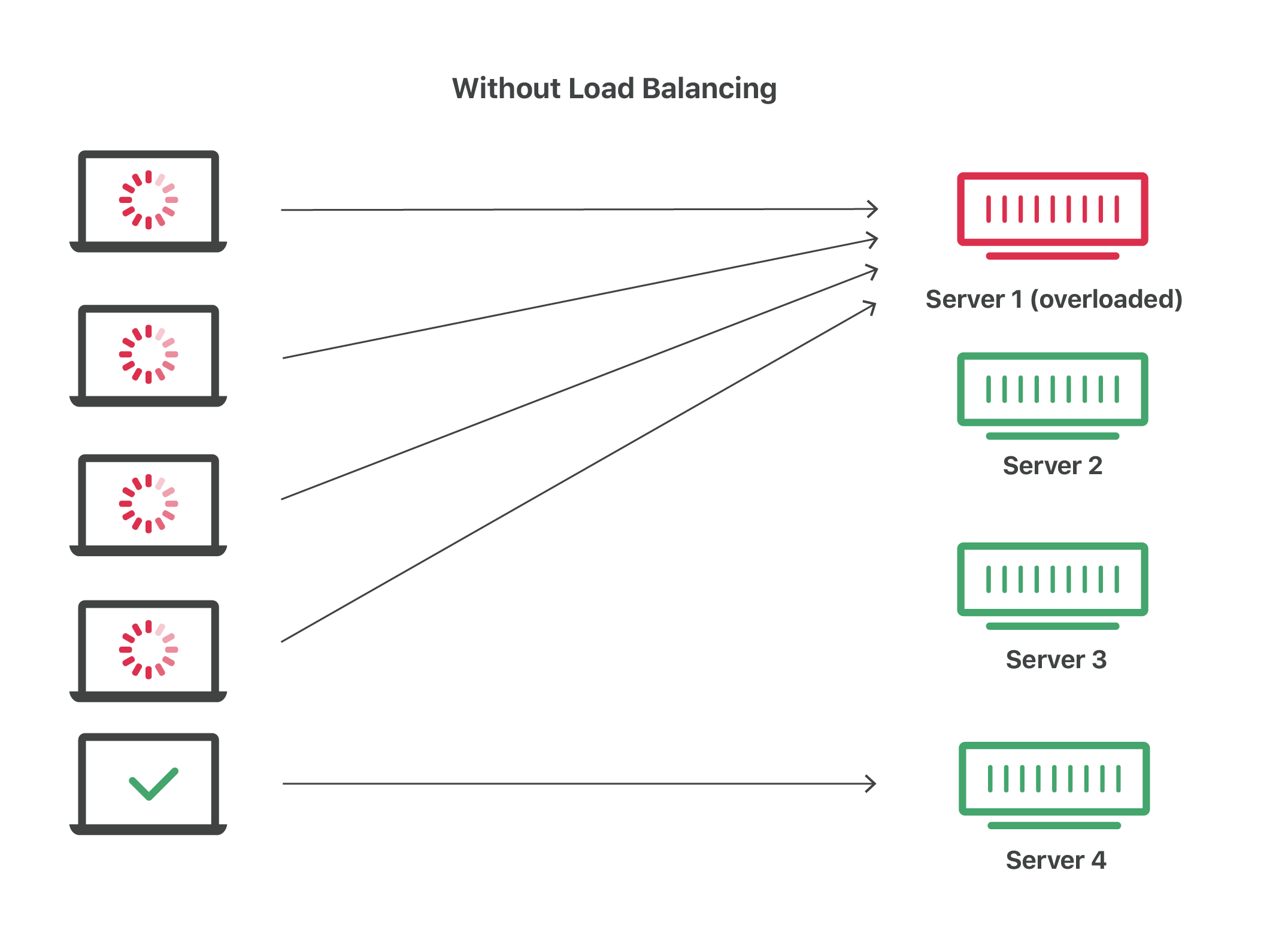Load balancers are essential components in modern computer networks. They help distribute incoming traffic across multiple servers, ensuring that no single server becomes overwhelmed with requests. This not only improves the performance and availability of the servers but also ensures that the overall network remains stable and responsive.
What is a Load Balancer
A load balancer is a software or hardware device that distributes incoming network traffic across multiple servers or resources in order to optimize resource utilization, maximize throughput, minimize response time, and avoid overload.
The load balancer acts as a mediator between client devices and servers by routing incoming traffic to the most appropriate server based on criteria such as server availability, capacity, and health. By distributing traffic across multiple servers, a load balancer can help to ensure that no single server becomes overwhelmed with traffic, which can lead to downtime or slow performance.

Image 1: Single Server

The first image shows a simple setup where all traffic is directed to a single server. In this scenario, if the server experiences a spike in traffic or if it fails, the entire network becomes unavailable, resulting in downtime and potentially lost revenue. This approach is not scalable or resilient and can cause significant problems in the long term.
Image 2: Multiple Servers without Load Balancer

The second image shows a setup where multiple servers are deployed, but there is no load balancer. In this scenario, the servers are not utilized optimally, and some may remain idle while others become overloaded. Additionally, if one server fails, all traffic is directed to the remaining servers, causing them to become overwhelmed, and the network becomes unavailable. This approach is not only inefficient but also risky.
Image 3: Load Balancer
As seen from the first image above, we can see a load balancer that exists between the client and multiple servers.
This image shows a load balancer inserted between the clients and servers. The load balancer acts as a traffic cop, distributing incoming requests to the available servers based on predefined rules. This ensures that the servers are utilized optimally, and none become overwhelmed. Additionally, if one server fails, the load balancer redirects traffic to the remaining servers, ensuring that the network remains available.
Image 4: Load Balancer with Auto-Scaling

The fourth image shows a load balancer with auto-scaling capabilities. Auto-scaling allows the network to dynamically adjust the number of servers based on traffic patterns. If the load on the servers increases, the load balancer automatically adds more servers to handle the traffic. Conversely, if the load decreases, the load balancer scales down the number of servers, reducing costs and optimizing resource utilization. This approach ensures that the network remains responsive and available while minimizing costs.
Why do we need load balancers
- Improved Performance: Load balancers help distribute incoming traffic across multiple servers, ensuring that no single server becomes overwhelmed with requests. This means that each server can handle a smaller load, resulting in improved response times and better overall performance. Load balancing ensures that requests are distributed evenly across all servers, minimizing the risk of any server becoming overwhelmed.
- High Availability: Load balancers also help ensure high availability by directing traffic away from any servers that are down or experiencing issues. By using multiple servers, load balancers can redirect traffic to healthy servers, ensuring that the network remains available and responsive even in the event of server failure.
- Scalability: Load balancers make it easier to scale an infrastructure as traffic grows. By adding additional servers, the load balancer can distribute traffic across all servers, ensuring that performance remains consistent. Additionally, load balancers can automatically detect and respond to traffic spikes, increasing the number of servers to handle the increased load.
- Security: Load balancers can provide an additional layer of security by acting as a proxy for incoming traffic. This allows them to filter out malicious traffic and prevent it from reaching the servers. Load balancers can also encrypt traffic between clients and servers, providing an additional layer of security.
- Cost Savings: Load balancers can help organizations save money by reducing the number of servers required to handle incoming traffic. By distributing traffic evenly across all servers, load balancers can ensure that each server is being fully utilized. Additionally, load balancers can automatically scale the number of servers up and down as needed, allowing organizations to only pay for the resources they need.
